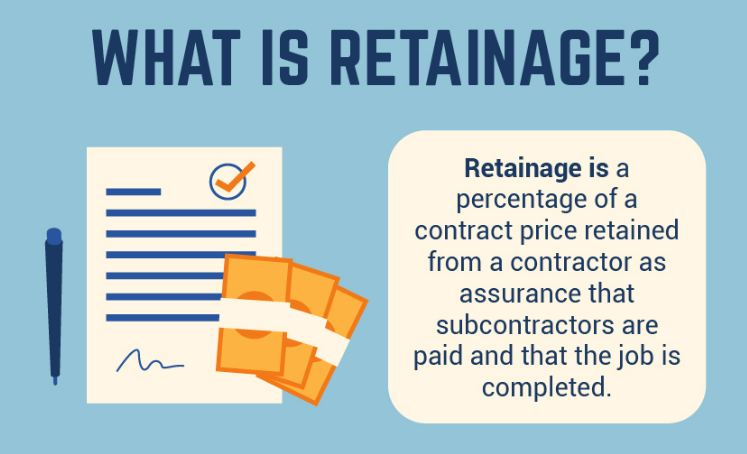Legal Tip: Negotiating Retainage with GCs
Originally Published by: SBCA Magazine — April 12, 2023
SBCA appreciates your input; please email us if you have any comments or corrections to this article.
Editor’s Note: The following article is the first in a series prepared by Kent Pagel, president of the Houston, Texas, law firm, Pagel, Davis & Hill, and legal counsel for the National Framers Council (NFC). Since 1994, Kent has been advising local, regional and national companies involved in residential, commercial and industrial construction, providing counsel on matters of litigation and arbitration, insurance, liability, contracts and operations.
This NFC Legal Tip of the Month™ will address the means to collect retainage on private projects faster. It should be noted that retainage on public projects, whether local, state, or federal, is generally mandated by applicable statutes and not by the contracts signed by the parties.
Retainage is basically just a portion of the total amount of your subcontract sum. Retainage is intended to provide an incentive to the general contractor (on the part of the owner) and subcontractors (on the part of the general contractor) to complete their work. Additionally, retainage protects the owner if the project is not completed. While these are noble intentions, the retainage system has become increasingly inequitable and counterproductive.

Needless to say, every framing subcontractor has witnessed firsthand abusive tactics on the part of general contractors (GCs) with respect to retainage. Too many GCs retain a higher percentage from subcontractors than the owners are retaining from the GCs. And retained funds are earning interest for either the owner or GC, and provide no benefit for the time value of money inures to the subcontractors. Retainage also encourages GCs to trump up reasons after subcontractors complete their work to not fully pay out retainage amounts. On some projects, the time period before retainage is released can stretch from weeks to months, and even years for the larger projects after the framing subcontractor completes its scope of work.
While retainage is customarily 10% on private projects, the amount is subject to the agreement signed by the GC and subcontractor. And most often, retainage is only released upon substantial completion of the project by the GC—which for a framing subcontractor can be months after completion of its work. If your subcontract is silent as to when retainage is released, the law generally indicates the retainage is only released following substantial completion of the project. And if your subcontract contains a pay if paid provision, the retainage amount is only payable to the framing subcontractor if and when the GC receives its retainage from the owner.
TIP: Ask to negotiate the percentage withheld for retainage.
TIP: If you determine the owner’s contract with the GC provides for less than 10% retainage, you ought to negotiate for a lesser retainage amount in your subcontract. Similarly, if the owner’s contract provides for an early release of a portion of the retainage to the GC, you ought to negotiate for a corresponding early release of your retainage.
TIP: Further, demonstrating retainage is subject to contract. I know of subcontractors who have agreed to a 15% retainage as a way to avoid agreeing to putting up a performance and payment bond for a particular project.
Retainage on materials purchased by a turnkey framer, which are effectively resold to the GC, obviously create cash flow challenges. Unless, of course, the turnkey framer can successfully negotiate corresponding retainage provisions with its suppliers. However, common practice is that suppliers will not agree to retainage on materials. Therefore, the turnkey framer should negotiate for zero retainage on materials. This absolutely should be the case if the GC has a carve out in its contract for no retainage on materials.
TIP: If the GC is concerned you may not pay your suppliers, consider offering up a joint check agreement to the GC as an alternative.
TIP: To avoid identifying the actual prices you are paying your suppliers, consider disclosing to the GC that you have at least an X% mark-up on all materials purchased.
Another option is to negotiate a payout of retainage upon your completion of various milestones. For example, negotiate for a 50% release of retainage upon completing your scope of work or ask that the retainage percentage revert to 5% upon completion of 50% of your scope of work.
Whether or not you are successful in negotiating one of these alternatives concerning retainage, always be mindful that the mechanic’s lien process does not necessarily wait for retainage payments. It is incumbent on you to send out the requisite notices by the dates required to secure your lien rights as to retainage. For projects with extended timelines, it’s quite possible that the mechanic’s lien deadline may expire long before the retainage is due.
